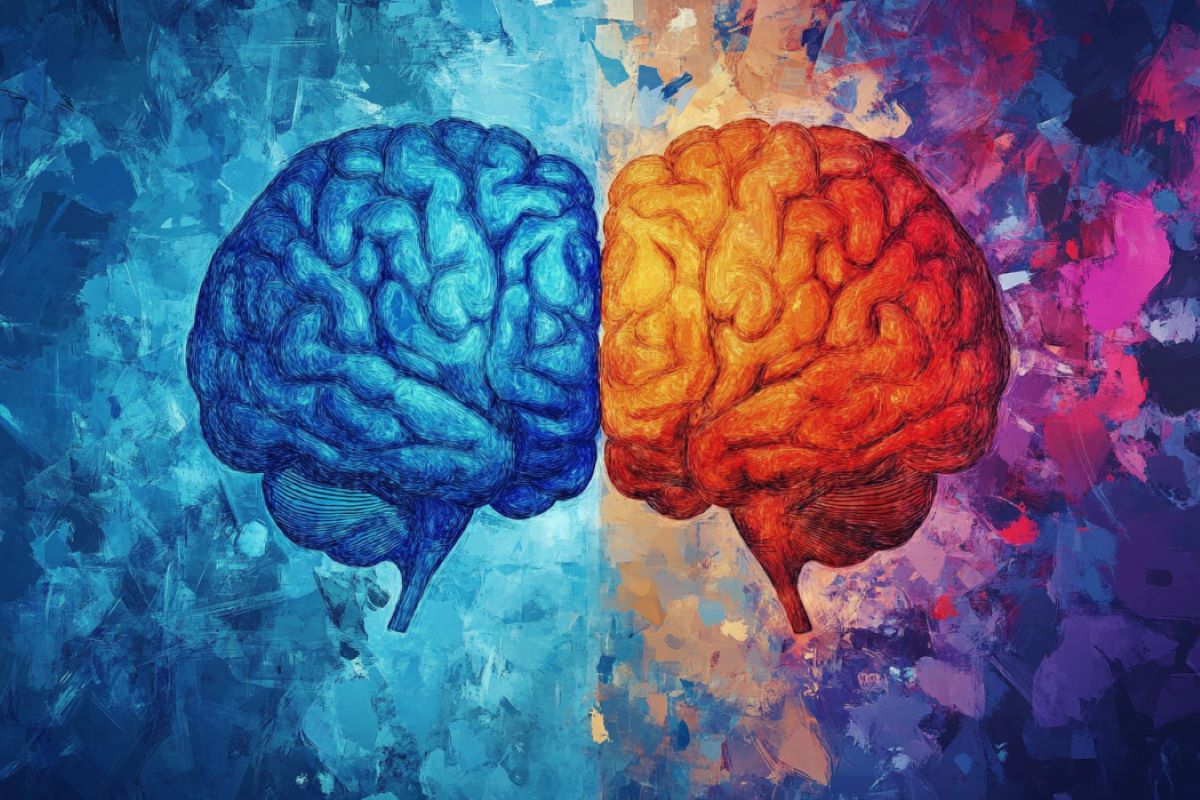Summary: A new study shows that brain synchronization between a neurotypical person and someone with autism is weaker compared to two neurotypical individuals interacting. Using EEG hyperscanning, researchers observed reduced inter-brain synchrony during hand movement imitation between mixed pairs, with autistic individuals more likely to follow than lead.
However, people with autism were equally capable of mimicking movements. The findings suggest that social interactions are bidirectional, shifting the focus from autism as an individual disorder to a relational condition that involves both parties.
Key Facts:
- Brain synchronization is weaker between autistic and neurotypical pairs.
- Autistic individuals were more likely to follow than lead in movement imitation.
- The study reframes autism as a relational condition, emphasizing bidirectional interaction.
Source: University of Montreal
The behavioral and inter-brain dynamics between a person with autism and a neurotypical person are different than those between two neurotypical people.
That’s the conclusion of a recent study by Guillaume Dumas, a professor in the Department of Psychiatry and Addiction at Université de Montréal and principal investigator at the Precision Psychiatry and Social Physiology Laboratory at the CHU Sainte-Justine Research Center.
The work is published in the journal Social Neuroscience.
Dumas is also an associate academic member of Mila—Quebec Artificial Intelligence Institute, and holds the IVADO Chair in Artificial Intelligence and Mental Health.
Not on the same wavelength
Dumas and his team conducted an experiment to study imitations of hand movements in pairs of neurotypical individuals compared with a neurotypical individual paired with a person with autism.
The subjects were seated in separate rooms and could see their partner’s hand movements on a screen. They were instructed to make meaningless gestures and were left free to imitate their partner’s movements or not. Their behavior was videotaped.
The research team also measured the pairs’ inter-brain synchrony pairs using EEG hyperscanning, a technique that can simultaneously record brain activity in multiple subjects.
Several years ago, Dumas demonstrated that human brains tend to spontaneously synchronize when engaged in social interaction, i.e. their electrical rhythms oscillate at the same frequency.
This new study found that the synchronization between a person with autism and a neurotypical person is less close than between two neurotypical people. It also found that people with autism were more likely to be followers than leaders in imitating hand movements.
“We found that the autistic subjects were just as capable of reproducing their partner’s behavior and synchronizing their movements with them,” said Dumas. “But they differed in ‘turn-taking’: they were less likely to initiate a movement.”
It’s not you, it’s us
Dumas believes the difference in turn-taking but not in ability to imitate suggests that autism is “a relational condition rather than a disorder specific to the individual.” This interpersonal perspective shifts the focus away from individual (dis)abilities.
“Impaired social interaction is bidirectional,” Dumas said. “But we never say that a neurotypical person has a deficit in social cognition when they have a hard time understanding a person with autism. When an interaction is more difficult, the responsibility lies with everyone involved.”
By adopting an interpersonal perspective on autism that takes diversity into account, Dumas hopes to pave the way for a more preventative and inclusive approach to mental health.
About this autism and neuroscience research news
Author: Béatrice St-Cyr-Leroux
Source: University of Montreal
Contact: Béatrice St-Cyr-Leroux – University of Montreal
Image: The image is credited to Neuroscience News
Original Research: Open access.
“Distinct social behavior and inter-brain connectivity in Dyads with autistic individuals” by Guillaume Dumas et al. Social Neuroscience
Abstract
Distinct social behavior and inter-brain connectivity in Dyads with autistic individuals
Autism Spectrum Disorder (ASD) is defined by distinctive socio-cognitive behaviors that deviate from typical patterns. Notably, social imitation skills appear to be particularly impacted, manifesting early on in development.
This paper compared the behavior and inter-brain dynamics of dyads made up of two typically developing (TD) participants with mixed dyads made up of ASD and TD participants during social imitation tasks.
By combining kinematics and EEG-hyperscanning, we show that individuals with ASD exhibited a preference for the follower rather than the lead role in imitating scenarios.
Moreover, the study revealed inter-brain synchrony differences, with low-alpha inter-brain synchrony differentiating control and mixed dyads.
The study’s findings suggest the importance of studying interpersonal phenomena in dynamic and ecological settings and using hyperscanning methods to capture inter-brain dynamics during actual social interactions.








